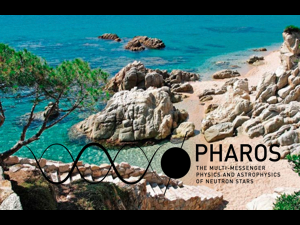Speaker
Mr
Francesco Zappa
(Friedrich-Schiller-Universität Jena Theoretisch-Physikalisches Institut, Jena, Germany)
Description
We give numerical relativity estimate of the luminosity peak of gravitational waves emitted during the coalescence of binary neutron stars. Our model is constructed from the CoRe-collaboration database and depends only on the main binary's parameters, allowing to make predictions of the luminosity of such events. Highest luminosity peaks are produced when the merger ends in a black hole that promptly forms after the collision of the two stars, while the largest amount of gravitational wave energy is emitted when a massive, rapidly rotating neutron star forms. This allows to make estimates on the outcome of binary neutron star mergers based on the fundamental parameters of the binary only. In addition we provide an upper limit for the maximum energy of gravitational waves emitted in the process as predicted by numerical relativity. Eventually we discuss a simple empirical relation between the total GW's energy emitted and the remnant's angular momentum and its implications.
Primary author
Mr
Francesco Zappa
(Friedrich-Schiller-Universität Jena Theoretisch-Physikalisches Institut, Jena, Germany)

